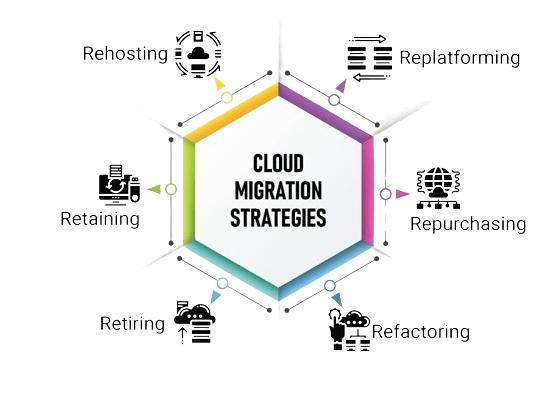Companies are accelerating their migration to cloud computing to leverage the new technology for competitive advantage in the digital world. With cloud investments generating huge dividends in the form of greater flexibility, scalability, and agility, businesses are moving their IT assets to cloud platforms. A Cybersecurity Ventures report estimates that over 100 Zettabytes of data will be moved to cloud data centers by 2025. It represents an investment of about $448.34 BN. These numbers are likely to increase since companies are enthusiastic about adopting cloud applications to spur growth.
With companies putting over 45% of IT investments into moving their legacy solutions to the cloud, migration in cloud computing is expected to be worth $623.3 BN in 2023. However, maximizing cloud benefits depends on your cloud migration strategy.
In this article, we will discuss what cloud migration entails including the processes and tools that will help businesses embarking on this road with several factors to consider.
1. Strategies for migration in cloud computing

When strategizing cloud migration for a seamless transfer of resources, most companies follow a framework known as ‘The 6 Rs of Cloud Migration’. Regardless of your approach, these steps will guide you in your pursuit of migration in cloud computing.
- Rehost: Commonly known as ‘lift and shift’, this strategy involves picking your workloads from on-prem servers and placing them on the cloud. It requires no changes in architecture, servers, or applications.
- Replatform: It is a slightly complicated migration strategy that will involve optimizing your applications to suit the cloud infrastructure. Replatform will require skill and effort to carry out the shift.
- Repurchase: Not strictly a migration in cloud computing but repurchase will require you to switch to completely new and cloud-based products, services, and platforms. It will mean you must terminate your current licenses, which earned it the name ‘drop and shop’.
- Refactor: This cloud migration strategy involves redesigning your applications to improve their performance or meet current customer demands. In this approach of migration in cloud computing, you will require significant time and expertise.
- Retain: Looking at the complexity or business-criticality of some workloads, you might have to keep them in your on-prem infrastructure by adopting a hybrid model.
- Retire: In this strategy, you will identify services, workloads, or components that must be retired so that you can improve other services that will produce business value.
2. Cloud migration process
Now that you have a fair idea about how to approach your migration in cloud computing, let’s understand the stepwise process. Although the process may differ based on the complexity of your applications or migration strategy, the below steps cover the process broadly.
3. Planning your migration
Once you device to move to a cloud environment, you must have clarity on a few things such as-
- Reasons for moving to the cloud
- Cloud server requirements
- Cloud migration budget
- Access to resources and expertise
4. Select cloud environment
Cloud migration is not a straightforward approach. You have multiple models to adopt cloud platforms like public, private, hybrid, and multi-cloud. You must understand your requirements and make a choice.
5. Migrating your applications and data
Once you initiate migration in cloud computing, there are several factors that you must consider and prepare for such as security, performance, disruptions, and regulatory compliance. It is important to plan for data backup and recovery in case of any untoward incidents.
6. Validating the success of migration
Moving your applications and other assets doesn’t mean your migration was a success, you must conduct a thorough evaluation and testing to see if the performance is as desired.
7. Tools for migration in cloud computing
The success of your cloud strategy depends on the migration tools that you use. Generally, cloud providers have their own solutions or affiliated tools that assist you in moving IT assets. Instead of going with them, you can also choose third-party, cloud-agnostic tools for greater flexibility.
AWS migration tools
- AWS Migration Hub
- AWS Application Delivery Service
- AWS Application Migration Service
- AWS Database Migration Service
Azure migration tools
- Azure Migrate
- Data Migration Assistant
- Azure Database Migration Service
Google Cloud migration tools
- Google Cloud Rapid Assessment & Migration Program (RAMP)
- Application migration
- Database Migration Service
Pricing and advice tools
- AWS Migration Evaluator
- Azure Migrate Pricing
- Migrate for Compute Engine and Transfer your large datasets
Conclusion
Cloud adoption is a default business strategy for companies to stay relevant in the digital era. However, migration in cloud computing requires detailed planning, efficient testing, and proper resource gathering before you kick off the process. Instead of managing the burden of recruiting a team, training them, and bearing operational costs, you can outsource your cloud migration strategy to a cloud solutions provider, Prismberry. Backed by decades of experience and a strong team, Prismberry will make your shift to a cloud environment seamless and disruption-free.
Learn more about our capabilities.



